Plastic pollution: Images of a global problem
- Published
In its June issue, National Geographic magazine has published a selection of startling photos highlighting the vast amounts of discarded plastic, external choking the world's oceans, shorelines and rivers.
Wildlife, particularly marine animals, are at risk when they become entangled in plastic waste, or ingest it.
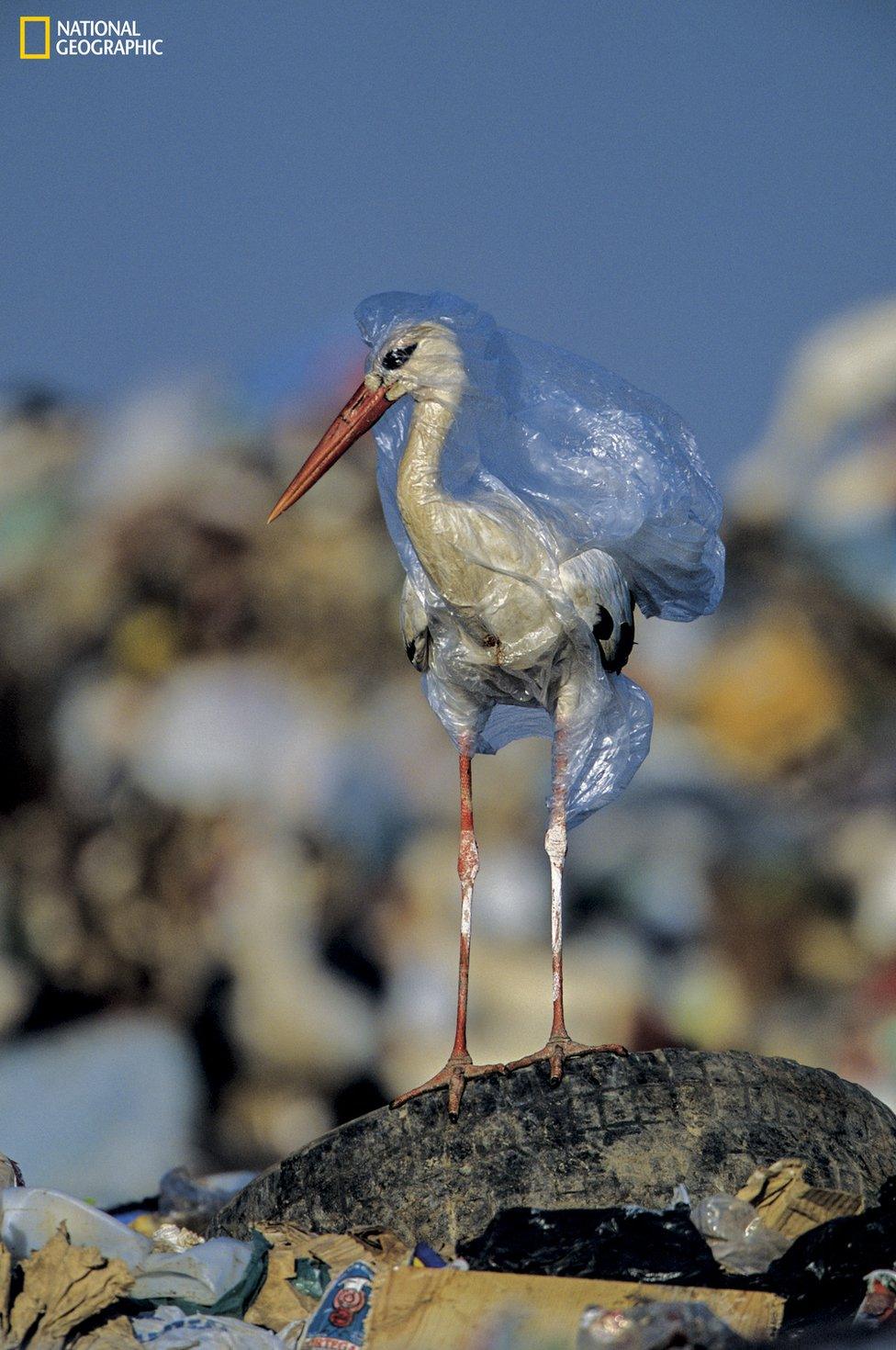
Trapped in a plastic bag at a landfill in Spain, this stork has a lucky escape - the photographer later freed it.
One bag can kill more than once: carcasses decay, but the plastic lasts.

This loggerhead turtle has become entangled in an old plastic fishing net in the Mediterranean, off the coast of Spain.
The turtle could stretch its neck above water to breathe but would have died had the photographer not freed it.
Derelict fishing gear poses a major threat to large marine animals such as turtles.
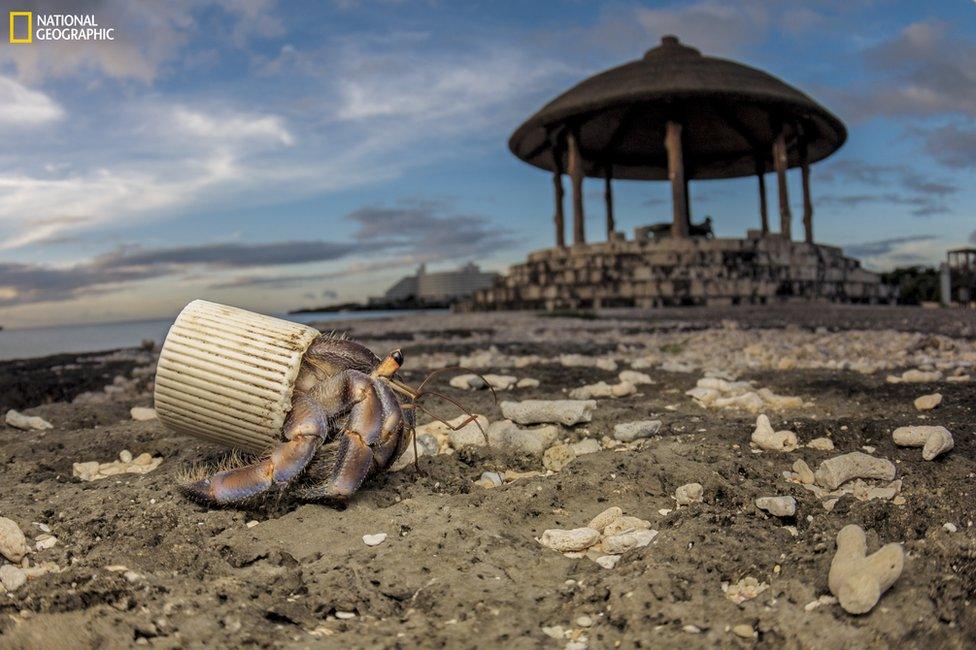
On Okinawa, Japan, a hermit crab resorts to a plastic bottle cap to protect its soft abdomen.
Beachgoers collect the shells the crabs normally use, leaving their rubbish behind.
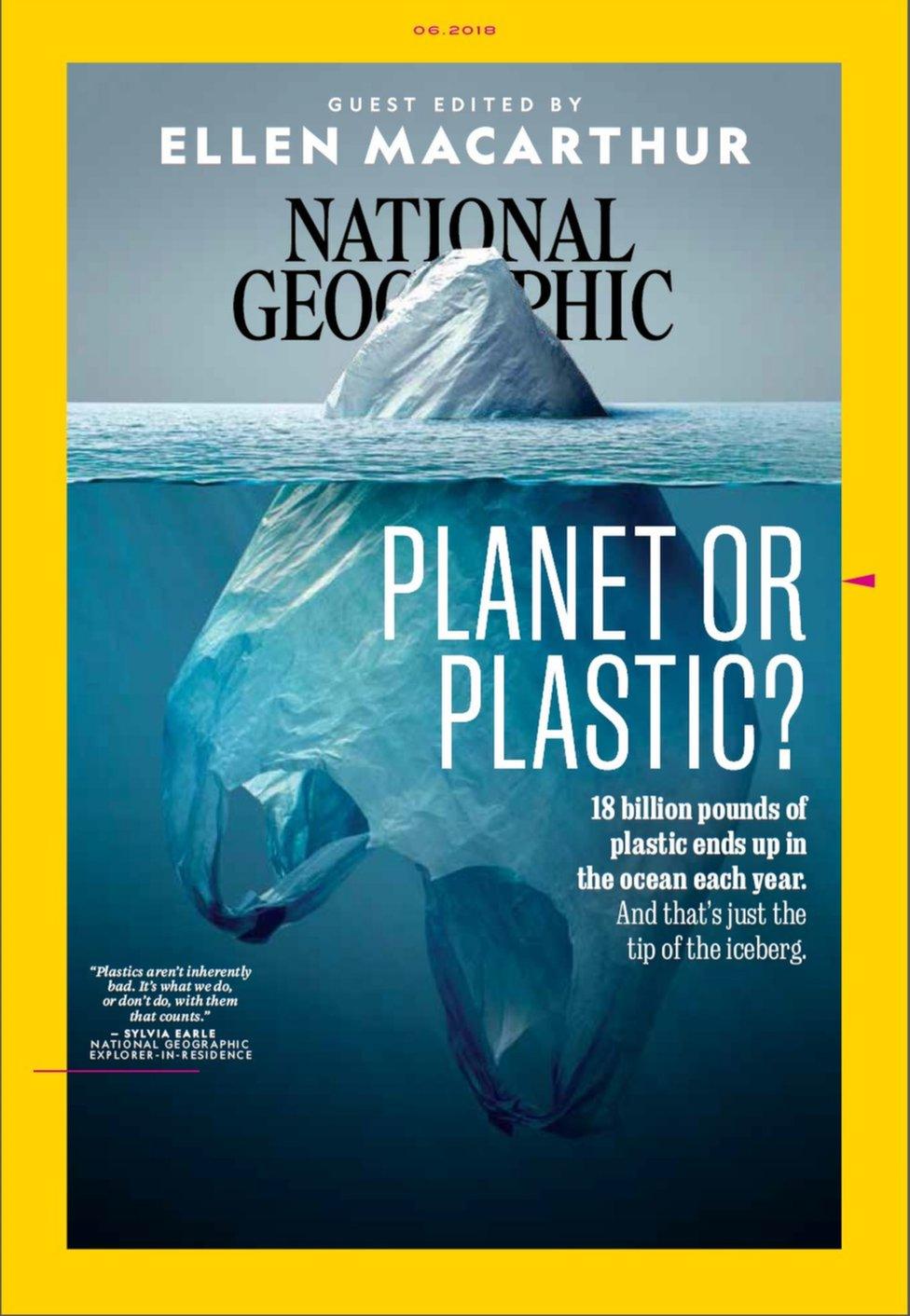
The magazine has devoted much of its issue to the problem; the plastic pollution we can see at the surface is probably just a small proportion of what's in the ocean.
Plastic waste can break down into tiny particles, which are less visible, but may still affect marine life.
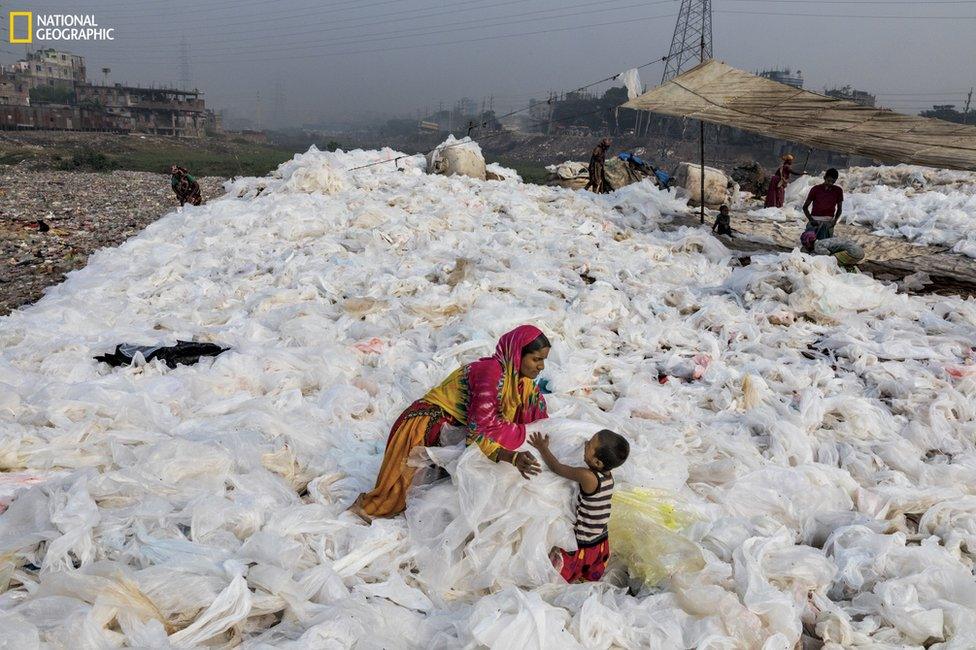
After sheets of clear plastic trash have been washed in the Buriganga River, in Dhaka, Bangladesh, a woman spreads them out to dry.
She turns them regularly, while also tending to her son.
The plastic will eventually be sold to a recycler. Less than one-fifth of all plastic gets recycled globally. In the US it's less than 10%.
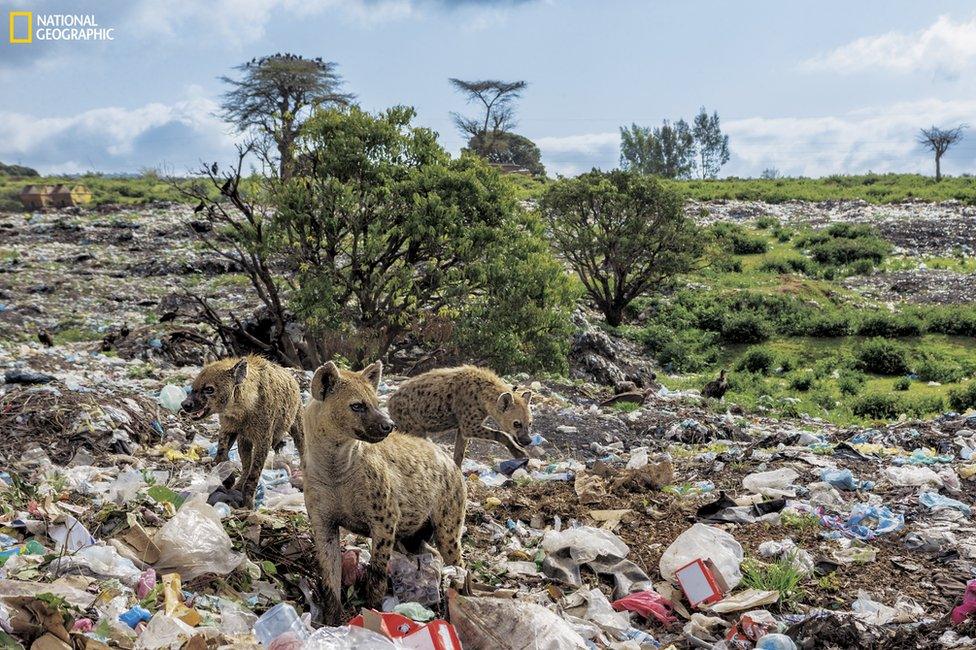
These hyenas are shown scavenging at a landfill in Harar, Ethiopia.
They have adapted to the new normal: the animals listen for the collection trucks and find much of their food in the rubbish.
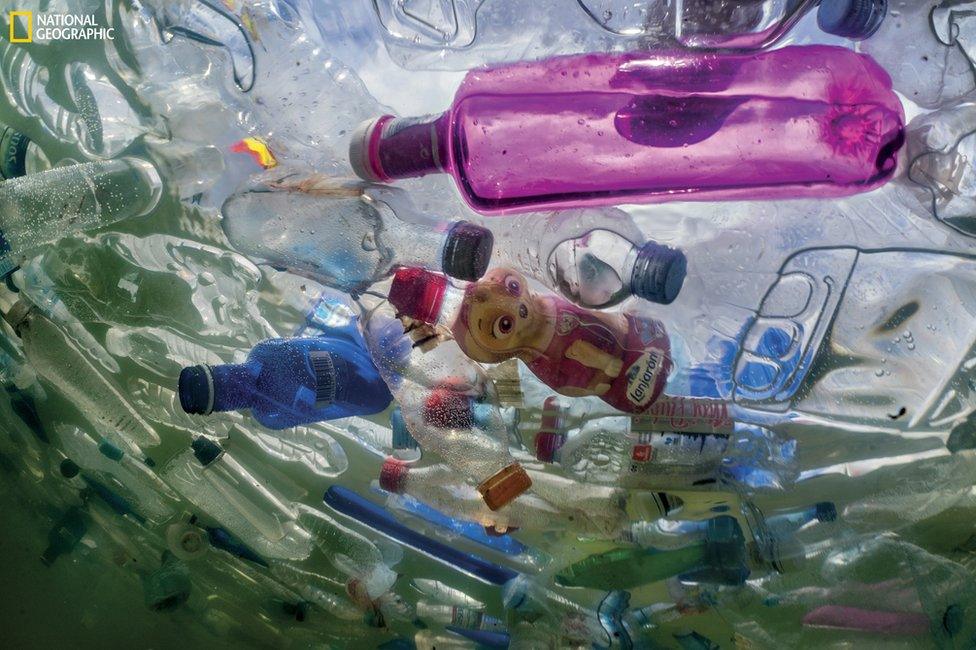
Plastic bottles choke the Cibeles fountain, in central Madrid. An art collective called Luzinterruptus filled this and two other Madrid fountains with 60,000 discarded bottles as a way of calling attention to the environmental impact of disposable plastics.
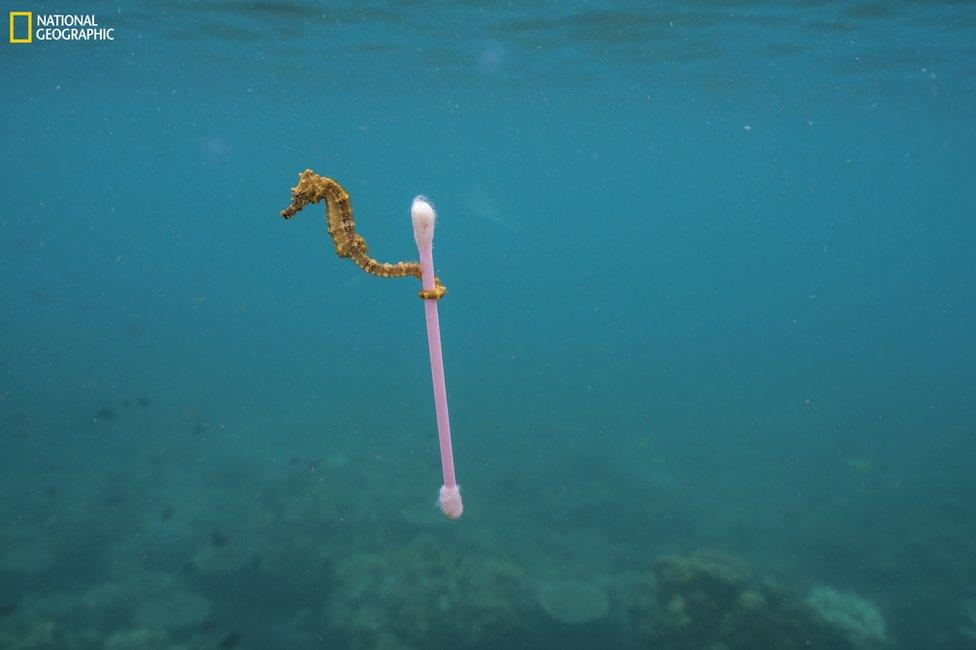
To ride currents, seahorses clutch drifting seagrass or other natural debris. In the polluted waters off the Indonesian island of Sumbawa, this seahorse has latched onto a plastic cotton bud. Photographer Justin Hofman said it was "a photo I wish didn't exist".

Ellen MacArthur Guest Edits the June issue of National Geographic. Working in collaboration with Global Editor-in-Chief Susan Goldberg and the editorial team, twelve notable British figures, each respected leaders in their fields, have been exploring topics such as sustainability, technology, environmentalism and human ingenuity, as part of this first ever Guest Editor project.
It began in January, with the world's greatest living explorer Sir Ranulph Fiennes and a further eight Guest Editors were then announced including Dame Ellen MacArthur, Sir Mo Farah, Lily Cole, Archie Panjabi, Katie Piper, Maria Balshaw and Professor Brian Cox.